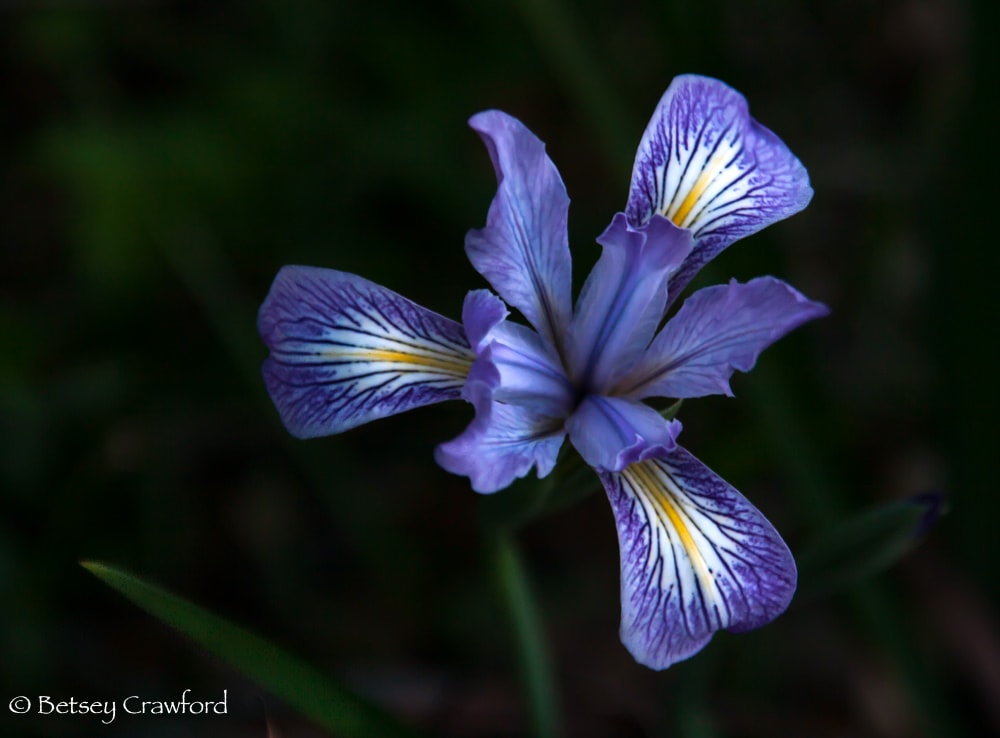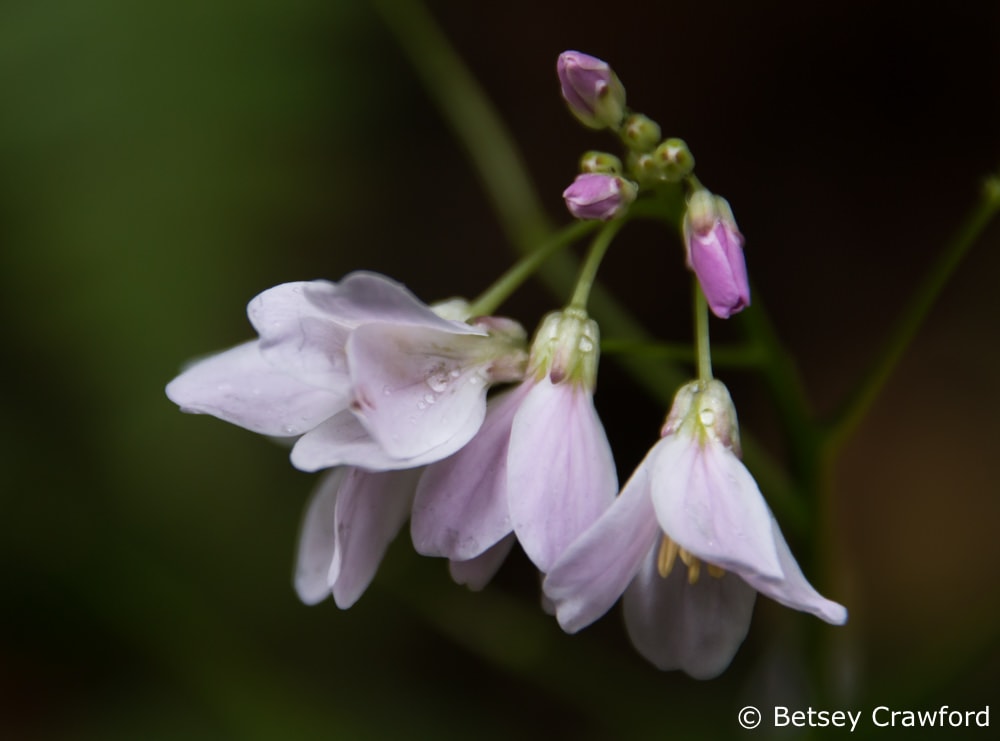
One of my greatest moments of transcendence happened on the Marin headlands. I was standing within view of the glittering city of San Francisco and the elegant curve of the Golden Gate bridge. It was early in March, and the wildflower season had started. I had been hiking and photographing them for three hours, working my way uphill, out of sight of the ocean.
I had come through a variety of landscapes. The mostly dry meadows at the beginning of the hike, full of California. A riparian area near a stream that gave willows a foothold. Then the rocky ups and downs of the even drier hills, their gravelly trails edged with pockets of shooting stars and milkmaids. Closer to the juncture with the coastal trail, chaparral took over, filling the air with the pungent smell of sagebrush.

By the time I got to the top of the headland, tired, ready to head downhill and find my car, it was dusk. The Pacific Ocean, living up to its name, lay serene and luminous ahead of me. In memory, the city isn’t there. It was all silver light, on the rolling hills behind me, on the pale gray twilit leaves. On the stone escarpment in front of me, on the sea, in the air. The warm spice of the feathery sage filled me, contrasting with the cool light.

As I began to move again, I was suddenly overcome with the wildness of the place and my place in it. Completely aware of this living, breathing convergence of life. The soft wind off the shimmering ocean, the ancient rocks, the growing dark. The scent of the ghostly plants. My body walking the rocky path.
I was both dissolved into it and moving, whole, embodied, through it, a wild creature myself. I felt a great, exultant love for every pulsing molecule around me, and equally for the feeling of being in it. For being part of it, the part that could move through itself, through the lingering heat and the cooling breeze. That could feel the silver light work its way through my cells.

I would love to live in that state of open-souled awe every moment of my life. Many things — grocery store lines, traffic, dentist appointments, the grief at a loved one’s illness — work against such a possibility. I am often, in the poet Wordsworth’s words, surprised by joy. But after opening his poem with that line, the rest speaks only of loss.
Transcendence routinely rises and then is swept away by the mundane. The memories — another night of silvery, windy light under a full moon when I was eighteen — can stay a long time. And there are many small, seemingly inconsequential moments of joy. A sleepy child’s arms around my neck. Sunlight filling a winter room. The sudden call of cicadas telling me midsummer has arrived.
But feeling completely dissolved into the natural world I love so much is rare, and I have been hugging that moment since.

I am perfectly happy to feel transcendence without figuring out why we have this wonderful ability. But, as a lover of all things DNA, I am intrigued by philosopher and psychologist Nicholas Humphrey’s theories. He posits that evolution has chosen awe to more firmly attach us to life on Earth.
The more delight we take in living, the more we will strive to survive and reproduce in an often difficult life. He suggests that our pleasure in being alive and connected to the beauty and enchantment around us is the basis for an innate spirituality. Something we were accustomed to long before we created religions to explain it.

I’m a little resistant to the idea of reducing awe to the biological imperative to reproduce. Though I love the idea that evolution would choose something so entrancing to ground us to our planet. I prefer the thoughts of cultural ecologist Thomas Berry, Buddhist Alan Watts, and cosmologist Carl Sagan.
Each held that consciousness results from the slow evolution of the universe’s ability to contemplate itself. Through our perceptions, the cosmos can turn eyes on its wildflowers and silver seas. Ears to its birdsong and rushing water. Skin to the feel of stone, of bark.

Even this lovely thought doesn’t quite reflect what I felt that evening on the Marin headlands. I didn’t feel that I was the universe reflecting on itself. I felt like I was the universe, not merely one infinitesimal expression of it.
And not — though I love this — that I and the radiant molecules around me were all made of the same elements. That we are descended from the same stars. I felt, briefly and gloriously, that there was no distinction between me and the vast, wild, perilous, gorgeous cosmos.

Top photo: Douglas iris (Iris douglasiana)
~ RELATED POSTS ~

My youngest nephew is standing at the gates of adulthood, appalled by what he finds beyond them. Our young are wondering if there will be a future for them. After a visit, one question stayed with me: where do I find comfort and inspiration? This is my answer.

Humanity is now one of the forces shaping the earth. Where can we turn for guidance on how to be such a force? To the powers of the universe itself. Radiance is my favorite, full of fire and heart, power and sweetness.

THE POWER OF ALLUREMENT, THE MYSTERY OF BEAUTY
Beauty is an aspect of the universal power cosmologist Brian Swimme calls allurement. The great attracting force of our cosmos, taking us deep below surface beauty. It connects us to the forces that brought us here. And can lead us into the world we yearn for.
Such beautiful writing — I could smell the sage , see the silver, and feel the transcendence. Thank you for taking me there. ❤️❤️❤️
Thank you for bring some of the magic of Marin into my life this morning.
Thank you, my dear. Hope you’re enjoying the season.
Betsey, you continue to inform and enlighten, through your beautiful photos and your words. When you say, “I felt, briefly and gloriously, that there was no distinction between me and the vast, wild, various, gorgeous cosmos,” you speak for us all. Each of us feels it, knows it, briefly, intermittently, but repeatedly, and that cumulatively constitutes knowledge, as well as inspiration. We live through the between-times increasingly with confidence of that ultimate truth, even when our consciousness deserts us, takes a breather for tasks we cannot understand. There is, as you say, an innate spirituality that will remain ours as long as we know and practice our routes of engagement, which you do especially through your imagery. The religions we have created can nourish and become part of that practice, if we allow our capacity for story and metaphor to flourish. The transcendent is also the ordinary, known with a more capacious mind, heart and eye. Thank you for what you give, which lives as we receive and give. The gift remains as it is passed on.
Thank you so much, John. I love the idea that these moments add up to wisdom and knowledge, particularly because they bring a wider perception to the kind of knowledge we accumulate in day to day living, leading to your beautiful thought: “The transcendent is also the ordinary, known with a more capacious mind, heart and eye.”
As I slowly become aware of my essence, your emailed presence inspires me again. Your beautiful pictures just emphasize your message of universality. I had never thought of my place of the universe before. You expression of these ideas are so well done.
Bruce
Thank you so much, Bruce. What a beautiful response.
Thanks Betsey! I’ve experienced a very similar transcendence in/on the Marin Headlands many moons ago now. I feel blissed returning to the memory while reading your inspired post and viewing your beautiful flower photos. Hugs and love my friend.
Hugs and love in return. So delighted to be making my ex-Cali friends happy!
Betsey, thank you for sharing! My neighbor Dave and I have philosophical discussions across the fence, and awe was a recent topic (literally, he leans over flowers on one side, I lean over thorny berry bushes on the other side, both of us under a ragged willow tree). How awe keeps us alive, makes us care. Dave an I are both awe-seekers:) I find awe all the time, but feeling a part of it (the moment, the universe, whatever)…THAT is the magic of precious few moments. It’s not easy to describe. I found a book recently, Living with a Wild God, by Barbara Ehrenreich—maybe you know it?—-and I had high hopes I might understand this awe and transcendence better through her eyes and words. But not really. I guess it’s a pretty slippery creature. Maybe that’s the way it’s should be:)
Thanks, Janiene. What a great neighbor to have! And I love the idea of being an awe-seeker. I’ll have to look at BE’s book. Sounds like something unusual for her. And yes, maybe awe is designed to be elusive to any kind of definition or pinning down.
You brought me back to my beloved California- the incredible flowers growing from spaces between rocks, the smell of the dry earth infused with pine and salt and the magical moments of simply being part of it- all of it. These moments are so precious! Thank you for your elegant words and radient images.
I’m so delighted to have brought California to you!
Beautiful reflection – both your words and these exquisite images of the wild flowers I’ve spent every spring of my life with. (Who knew blue eyed grass was so lush and rich?). Perfect for Sunday morning. The part that touches me so deeply is that you are part of all the wildness. There is so much demonizing of humans in the environmental movement. But we are part of this same evolution. Your post feeds my great hope that we are on some eventual path to living your transcendent moment, all of us.
Thank you so much, Cara. I have the same hope. It is funny to think of blue-eyed grass as lush, but it’s exquisite and very photogenic. I’ve always loved it, but it wouldn’t grow more than a season or two when I’d try it in gardens on the east coast, though a form of it is native in the east.
thank you for this elegant post. I am on my way to california in a few days and will keep your experience in my mind.
Thanks, dear Jane. I’ll be in touch about getting together while you’re here.